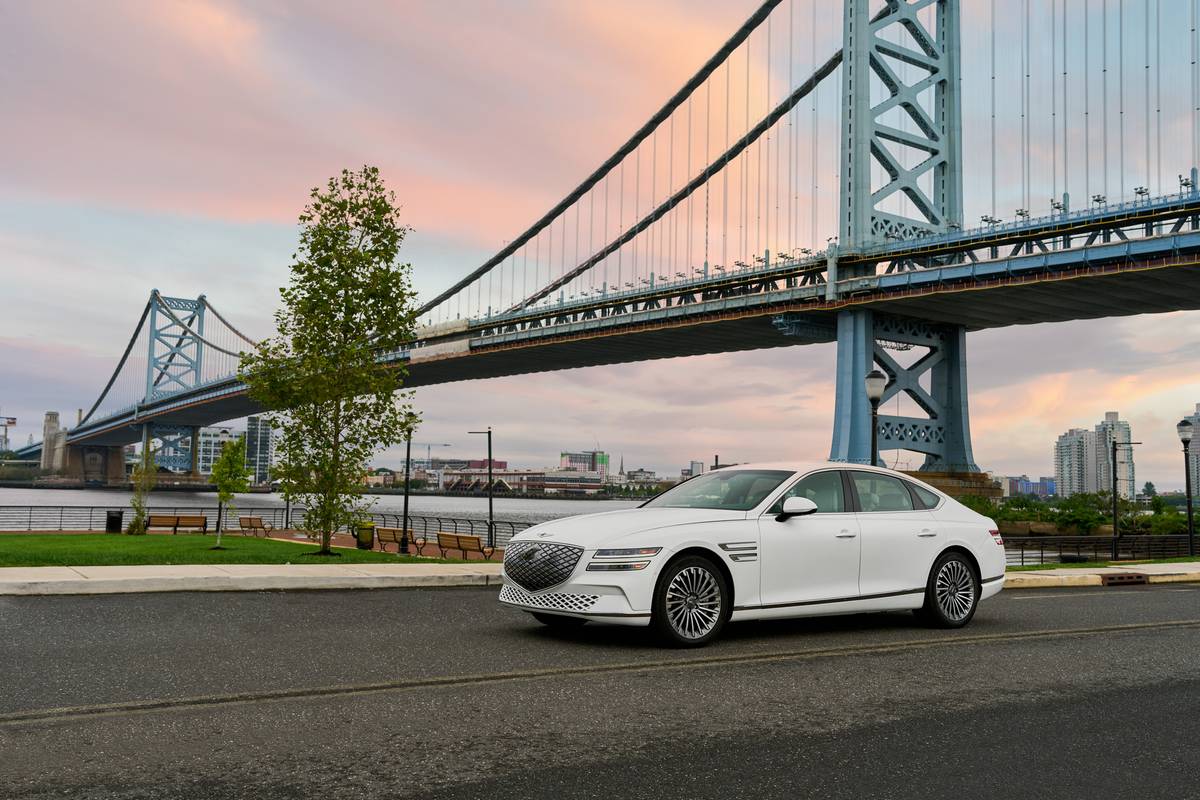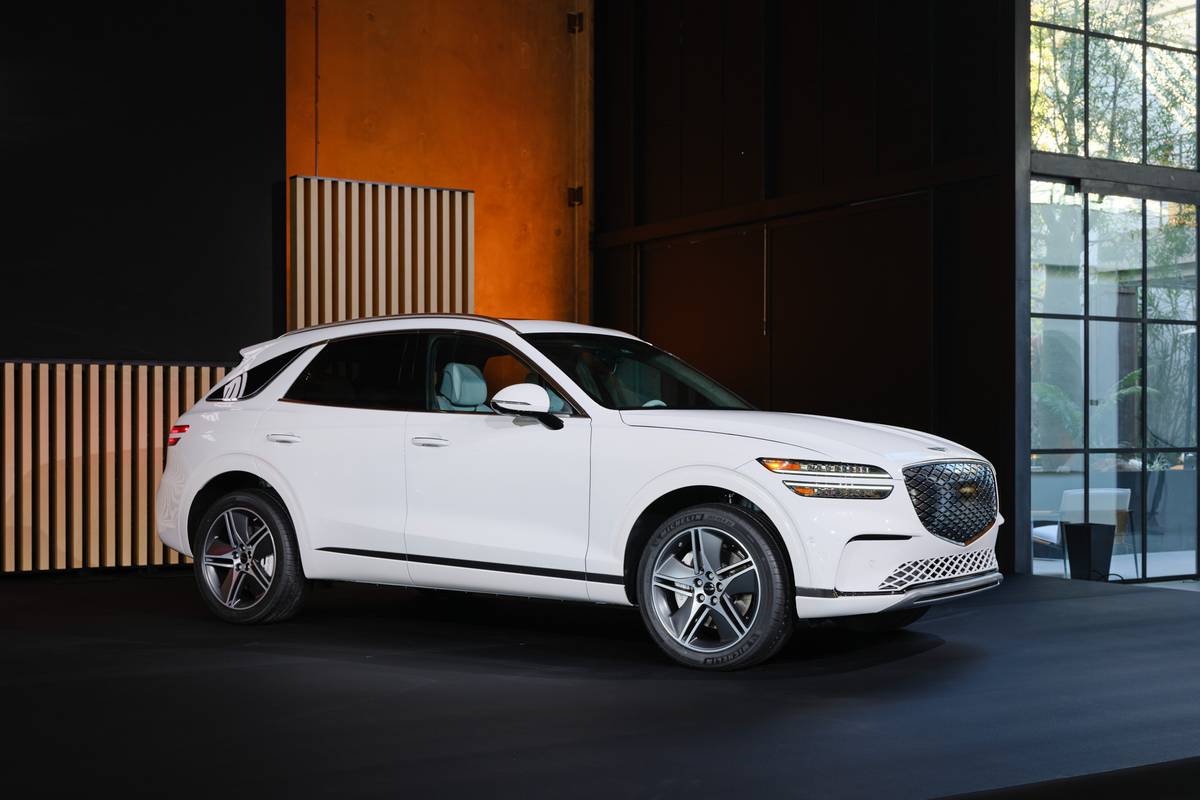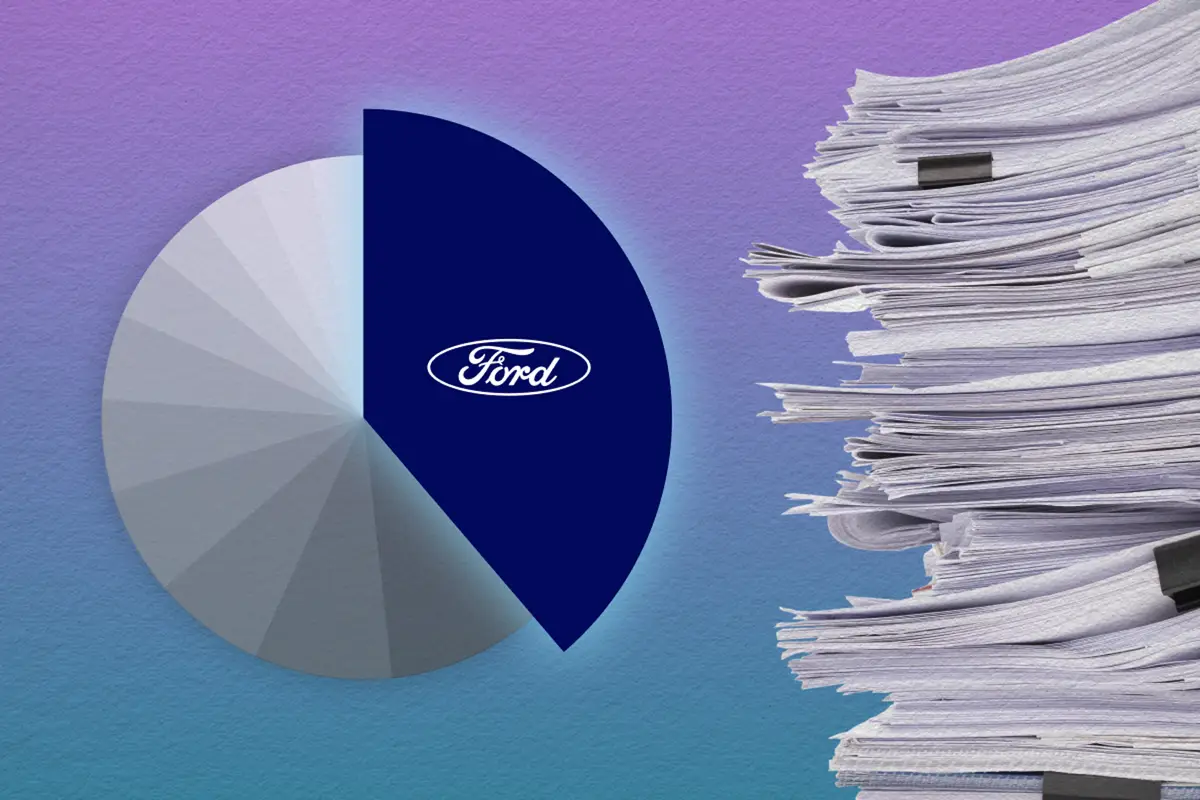chicagotribune.com's view
Finbarr O’Neill, president and chief executive of Hyundai, said it best.
“We used to be the brand of last resort, now we are the brand of choice,” O’Neill said, waxing philosophic at the Chicago Auto Show last month.
Neither Cadillac, Lincoln, Mercedes-Benz, BMW, Volvo nor Jaguar is in danger of the South Korean automaker winning luxury sales from them.
But Ford, Chevrolet, Honda, Toyota and Nissan should occasionally check whether folks are being lured away from their low-end, entry-level vehicles in favor of a low-end, entry-level Hyundai.
Hyundai’s appeal: low price and a 10-year/100,000-mile powertrain and five-year/60,000-mile bumper-to-bumper warranty.
For ’03 the Tiburon sports coupe has been redesigned and is offered in base and GT versions. We tested the top-of-the-line GT V-6, which sports a performance handling suspension complemented by 17-inch radials, and, for the first time, offers a V-6 and 6-speed manual transmission.
Tiburon began as a concept called the HCD-I in 1993 that evolved into a production model for the 1997 model year.
While a product of a carmaker known for low-price, high-mileage basic transportation, Tiburon doesn’t look like an entry-level car. It looks sporty and fashionable, with huge plastic lenses over the headlamps, air dam, fog lights and a decorative deck-lid spoiler, the trimmings on all the other small sports coupes on the market.
And though the new Tiburon is built on a 2-inch longer wheelbase and is 3 inches longer overall than the last generation, it has a back seat made to hold briefcase or grocery bag and not people, other than the kind that wear diapers–also like those other sports coupes.
Doesn’t act like an entry-level car, either. With the 2.7-liter, 181-horsepower V-6 that’s offered in the Hyundai Santa Fe sport-utility vehicle and Sonata sedan, the GT is spirited and steps lively from the light. First time you kick the pedal, you’ll be surprised how quickly it responds.
Have to say that the 18 m.p.g. city/26 m.p.g. highway mileage rating is disappointing considering Tiburon is a subcompact teamed with a 6-speed manual and not the optional ($750) automatic.
By comparison, a larger midsize Infiniti G35 sports sedan with 3.5-liter, 260-h.p. V-6 is rated at 19 m.p.g. city/26 m.p.g. highway.
If willing to sacrifice the sizzle and high mileage is your primary goal, you can opt for a base Tiburon with 2-liter, 140-h.p. 4-cylinder rated at 23 city/31 highway. Hyundai expects 40 percent of Tiburon buyers will want the 4-cylinder, which starts at $15,999.
GT ride is firm without bouncing you around and handling is rather precise without a tendency to wander wide when accelerating up the off ramp.
But Tiburon has its faults, other than a minuscule rear seat and fuel economy more than a couple m.p.g. short of bragging about.
Worst problem is that good-looking spoiler. The folks at Hyundai need to shrink it. Looks nice, but stands too high–right in the field of vision out the rear window. And when the snow fell and the spoiler collected several inches of it, vision was virtually blocked.
And how much would it cost to put white lettering or white symbols on the power moonroof controls so you can see and, more important, use them without fumbling around in the dark at night to reach a black button in a black roof header?
Another gripe is how Hyundai handles anti-lock brakes. When you market a car that invites the consumer to drive aggressively, you should make ABS standard. But ABS is an option, and a very costly one because to get ABS in the GT we tested, you have to purchase a package of goodies. You have to come up with $1,998 for the UltraSport package that includes ABS and the 6-speed manual (a 5-speed comes standard), aluminum pedals, body-colored spoiler and power moonroof with sunshade.
If you want ABS as a stand-alone option, you can get t for $499–only on the 4-cylinder Tiburon.
And while on the subject of ABS, a companion traction control system is not available on Tiburon–at any price.
The attraction, other than looks and decent performance, is price, with a base of $17,999. And it’s nice to look at a window sticker with a long list of equipment with the word “included” in the margin. If only ABS were on that list.
Standard equipment includes sport-tuned suspension; four-wheel disc brakes; dual exhausts; fog lights; 17-inch alloy wheels with Michelin sports radials; rear window washer/wiper/defroster; dual heated power mirrors; leather seats; dual front and side-impact air bags; intermittent wipers; 50/50 fold down rear seat backs; adjustable steering column; air conditioning; cruise control; keyless remote entry; Infinity AM/FM sound system with cassette, CD player and six speakers; and carpeted floor mats.
Hyundai, which sold more than 346,000 vehicles in the U.S. last year to become the fifth best selling import in the market, expects to add more than 28,000 Tiburons to that total this year, and insists it could sell more if only its plant in South Korea could build more.
Since the Hyundai lineup is known for low cost, conservatively styled, basic transportation, Tiburon’s sporty design makes it an image builder to attract more folks into showrooms, typically people who wouldn’t walk in just to check out yet another low-cost, conservatively styled basic transportation machine.
Tiburon’s goal is to win consumers over from competitive makes–namely the Toyota Celica, Mitsubishi Eclipse, Ford Mustang and any Honda Civic, to attract more youthful buyers.
How does a Honda Civic fit in with Celica, Eclipse and Mustang? Civic is the car of choice of youth who spend thousands of dollars to customize and personalize the vehicle.
Hyundai arrived in the U.S. with the Excel in 1986, a $4,000 new car alternative to any $4,000 used car. Quality proved so poor, Hyundai easily could have given up and gone back to South Korea. Instead it worked on new models with better quality while focusing on low price.
The gameplan worked and now with a steady increase in sales (record highs for 13 consecutive months through February), Hyundai will announce in a few weeks its final choice between Kentucky and Alabama for a U.S. plant capable of building 300,000 units annually.
The plant is expected to produce one model for at least a year to keep it simple and focus on quality. That vehicle will be followed by others, including one bearing the Kia name from its South Korean partner. The Hyundai Sonata and Kia Optima share the same platform and are a good bet to share the U.S. plant someday.
Strictly personal
In an industry known for its rogues, Leon Mandel, publisher emeritus of AutoWeek magazine, was truly a gentleman, a chronicler with wit and wisdom of anything and everything automotive, and a friend. He will be missed.
Sympathies to his son “Dutch.”
Latest news



